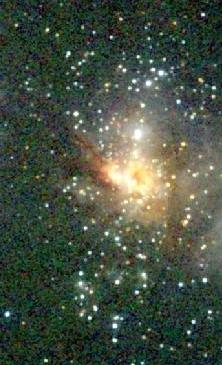The Exciting Lives of Stars

There are an estimated 100 billion stars in our galaxy.
Are they all the
same age as the Sun? No.
Most stars in the disk of our galaxy are from 5 to 10 billion years old.
However, some are very, very young, meaning they have only recently
formed. We see regions in our galaxy were stars are currently forming
today. Stars form from the gravitational collapse of interstellar gas.

Where did this gas come from? Dead Stars.
The very first stars formed from primordial gas created in the
Big Bang. It contained only H, He and Li. However, at the center
of the first stars, fusion reactions created more heavy elements,
like C, O, N and Fe. When these stars died, as Supernova or
red-giants, they released their material back into space, though
now the material is tainted (contaminated) with 'heavy elements'.
Since our Solar System contained heavy elements (C, Mg, Si, etc),
we know that the material that makes us up was once deep
inside a star.
Do all stars have the same lifetime
as the Sun? No.
The Sun is an average sized star. Stars 100 times and 1/10th times the
mass of the Sun exist. Those that are bigger than the Sun do not live
as long, perhaps only 10 million years (compared to the Sun's 10 billion
years) for the most massive. Little stars can live a very long time.
Stars formed 15 billion years ago that were 1/10th the Sun, have
burned an almost imperceptible amount of their fuel this far, and will
live for a trillion years yet.
Why does star formation continue today? Cooling Gas and Gravity
When material is first released from a star (supernova or red-giant),
its pretty hot. With time, it cools and the gravitational attraction
between the particles begins to dominate over the decreasing
thermal motions, causing clouds of material to clump.
This clumping continues towards the mass center, initiating further collapse.
Angular momentum present will produce a protostellar disk, which
will eventually form in to planets.